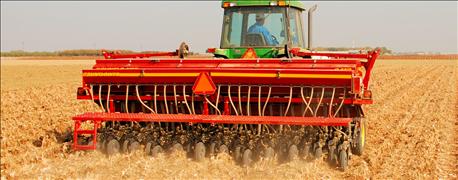
Exceptionally dry summer weather has pushed corn silage and grain harvest much earlier than usual. That opens the gate for seeding cover crops earlier than usual. But here's why you may need to "hold your horses".
Growers planning to plant cover crops and double crops need to consider all aspects of their game plan, notes Alyssa Collins, director of Penn State University's Southeast Agricultural Research and Extension Center at Landisville, Pa. Both can scavenge nutrients that might be lost if no cover crop were present, reduce erosion potential, provide an outlet for colder-weather manure application and be an opportunity to increase field organic matter and soil health.

TOO EARLY? Early-planted cover crops or double crops require closer watch for disease and insects.
If harvesting a cool-season forage double crop ahead of next spring's corn planting is planned, then it's important to get that double crop planted as early in the fall as possible. The same holds for cover crops that won't be harvested as grain. As a rule-of-thumb, the later into the fall the double crop is planted, the lower the yield the following spring will be.
A shorter relative maturity corn may be necessary when following a doublecrop forage. While yield potential may be lower for that shorter-season corn, the payoff is more total silage tonnage per acre with the harvested cool-season silage, she adds.
Early-plant small grain risks
Before you start dropping wheat and other small grain seeds in the ground, remember there are a few good reasons to wait. One reason is the Hessian fly, warns John Tooker, Penn State Extension entomologist.
Many growers haven't encountered Hessian flies until recently because most small grains have been planted after the fly-free date. But with the rise in cover cropping, outbreaks of larvae damage in wheat (and to a lesser degree barley and rye) also have been rising.
For best estimates of fly-free dates in Pennsylvania, see this website. Those fly-free dates may be imperfect, given the trends for warmer years, concedes Tooker. Actual dates might be a little later. Also, if your farm is at a higher elevation, the date is probably a little earlier than the rest of your county. Yes, predictability still is an inexact science.
~~~PAGE_BREAK_HERE~~~
With great adoption of small grains as cover crop species, more growers are planting wheat, rye, and barley earlier. Those early-planted fields are available for egg-laying female flies, which can then foster populations of Hessian fly larvae emerging adults during spring and further infest fields.
Insecticides generally aren't effective. The best tactic is to adhere to the fly-free dates and/or plant Hessian fly-resistant varieties of wheat, rye, or barley.
If you're in the practice of planting these cover crops well before the fly-free dates, it's prudent to assess local Hessian fly populations by scouting early-planted small grain cover crop (particularly wheat) for Hessian fly-induced stunting, larvae, and pupae, advises Tooker.
Another concern is the increased risk for barley yellow dwarf virus, a disease transmitted by cereal aphids. "We typically see this disease in early planted barley and wheat," he adds. "And it can be quite devastating."
About the Author(s)
You May Also Like




